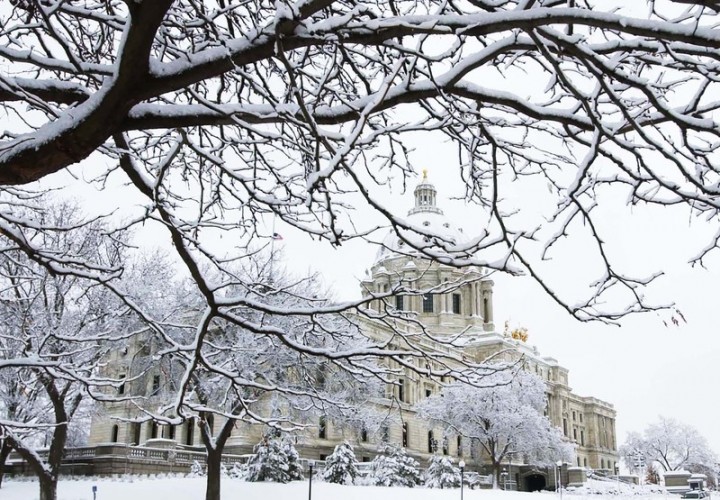

Share
The 2020 Minnesota Legislature will start its budget deliberations with a projected surplus of $1.332 billion, state officials announced Thursday.
Budget Commissioner Myron Frans credited the surplus to a better-than-expected finish to the last budget period, a rosier revenue forecast and a modest decrease in estimated spending. He said the extra revenue will also boost the state’s separate budget reserve — a cushion against economic downturns — to $2.359 billion.
Responding to Minnesota’s November Budget Forecast Minnesota AFL-CIO President Bill McCarthy issued the following statement:
“The November forecast is proof that progressive taxation, smart budgeting, and wise investments continues to keep Minnesota on strong fiscal ground.”
“Heading into next year’s legislative session, lawmakers should be focused on investing in priorities that improve life for working Minnesotans and their families. We applaud Governor Walz’s call for a robust bonding bill to protect and expand our state’s critical infrastructure. Lawmakers should leverage record low interest rates to pass as large of a bill as possible and create family sustaining jobs in communities across our state.”
Education Minnesota President Denise Specht released the following statements in response:
“One of the best investments of this larger-than-expected surplus is in a place Minnesotans clearly support—our public schools,” Specht said. “Once again, Minnesota citizens turned out in record numbers this fall to support local levies. They clearly understand the need to fund our schools. This surplus represents an opportunity for the state to invest in key initiatives that will improve learning conditions for our students.” Specht outlined specific ways some of the surplus could be invested:
- Expand training and encourage retention of Minnesota’s education support professionals, the educators who hold our schools together.
- Broaden access to full-service community schools, which are a proven way to help students achieve in school. This concept puts social, medical and before- and after-school academic services and enrichment activities where they are most accessible – on the school campus.
- Fully fund the Teachers of Color Act, sponsored by the Coalition to Increase Teachers of Color and American Indian Teachers in Minnesota, which includes increasing starting salaries and creating loan forgiveness and mentorship programs.
- Strengthen mental health supports for our students, including restoring student support staff cuts, adding more counselors, social workers, psychologists, nurses and other job classifications back into our schools.
ED Minn argues that these investments represent a good first step toward fully funding our schools.
“The chronic underfunding of public education in Minnesota demands billions of dollars in new investments to guarantee every Minnesota student—no matter what they look like or where they live—has an equitable opportunity for a great education,” Specht said. “Even today’s strong forecast shows business, as usual, won’t be enough. The Legislature needs to raise the revenue from our state’s wealthiest individuals and most powerful corporations so we can properly invest in our students and prepare all of them for successful lives.”

